Solar eclipse of December 22, 1889
A total solar eclipse occurred on December 22, 1889. A solar eclipse occurs when the Moon passes between Earth and the Sun, thereby totally or partly obscuring the image of the Sun for a viewer on Earth. A total solar eclipse occurs when the Moon's apparent diameter is larger than the Sun's, blocking all direct sunlight, turning day into darkness. Totality occurs in a narrow path across Earth's surface, with the partial solar eclipse visible over a surrounding region thousands of kilometres wide. It was visible from Cuba, to the coast of Brazil, and across southern Africa.
| Solar eclipse of December 22, 1889 | |
|---|---|
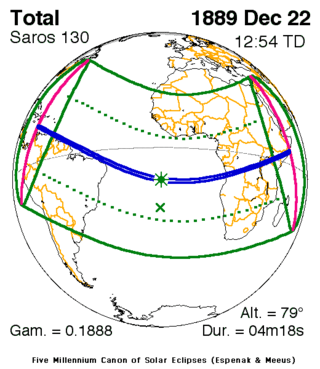 Map | |
| Type of eclipse | |
| Nature | Total |
| Gamma | 0.1888 |
| Magnitude | 1.0449 |
| Maximum eclipse | |
| Duration | 258 sec (4 m 18 s) |
| Coordinates | 12.7°S 12.8°W |
| Max. width of band | 152 km (94 mi) |
| Times (UTC) | |
| Greatest eclipse | 12:54:15 |
| References | |
| Saros | 130 (45 of 73) |
| Catalog # (SE5000) | 9257 |
Observations
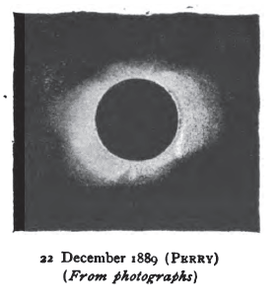
Related eclipses
Saros 130
This eclipse is a part of Saros cycle 130, repeating every 18 years, 11 days, containing 73 events. The series started with partial solar eclipse on August 20, 1096. It contains total eclipses from April 5, 1475 through July 18, 2232. There are no annular eclipses in the series. The series ends at member 73 as a partial eclipse on October 25, 2394. The longest duration of totality was 6 minutes, 41 seconds on July 11, 1619. All eclipses in this series occurs at the Moon’s descending node.[1]
| Series members 43–56 between 1853 and 2300 | ||
|---|---|---|
| 43 | 44 | 45 |
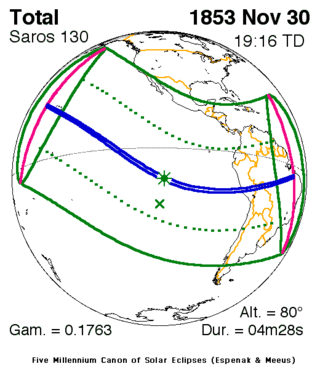 November 30, 1853 |
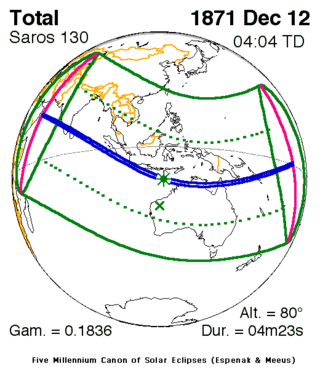 December 12, 1871 |
 December 22, 1889 |
| 46 | 47 | 48 |
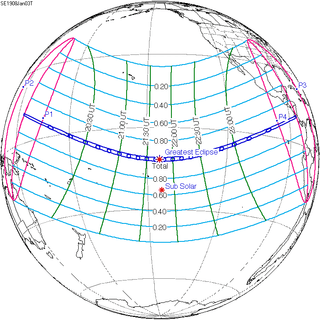 January 3, 1908 |
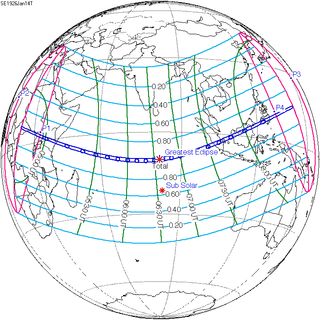 January 14, 1926 |
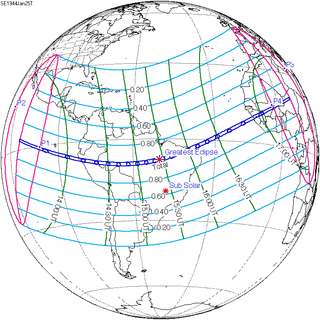 January 25, 1944 |
| 49 | 50 | 51 |
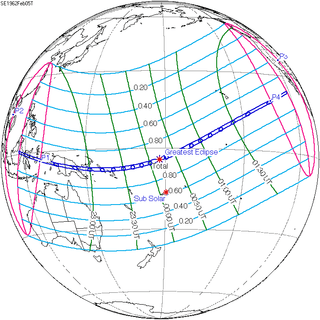 February 5, 1962 |
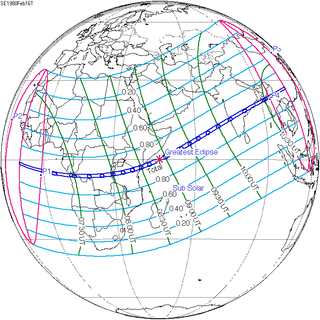 February 16, 1980 |
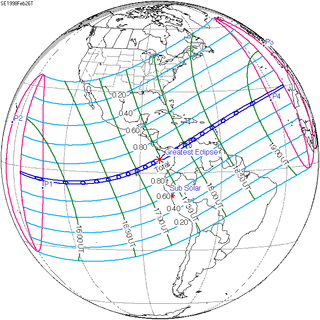 February 26, 1998 |
| 52 | 53 | 54 |
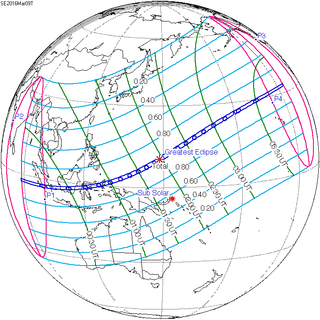 March 9, 2016 |
 March 20, 2034 |
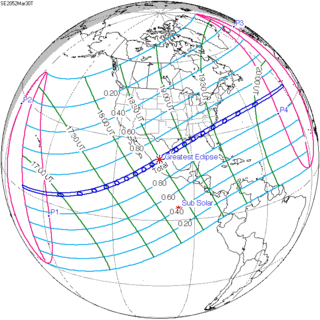 March 30, 2052 |
| 55 | 56 | 57 |
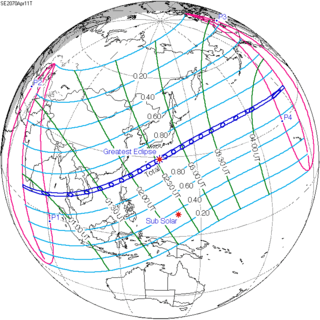 April 11, 2070 |
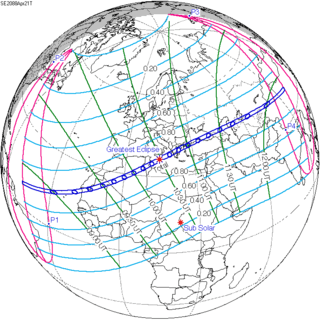 April 21, 2088 |
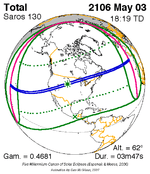 May 3, 2106 |
| 58 | 59 | 60 |
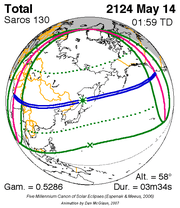 May 14, 2124 |
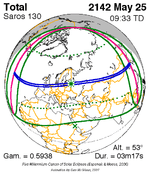 May 25, 2142 |
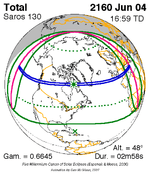 June 4, 2160 |
| 61 | 62 | 63 |
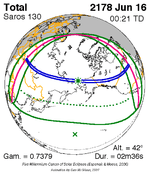 June 16, 2178 |
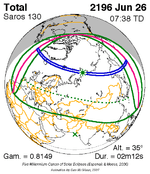 June 26, 2196 |
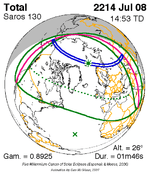 July 8, 2214 |
| 64 | 65 | 66 |
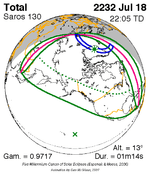 July 18, 2232 |
 July 30, 2250 |
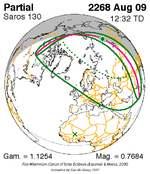 August 9, 2268 |
| 67 | ||
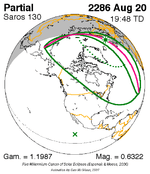 August 20, 2286 | ||
References
- NASA graphic
- Sketchs of Solar Corona December 22, 1889
- Eclipse of December 21, 1889 (Cayenne). Contact print from the original glass negative. Lick Observatory Plate Archive, Mt. Hamilton.
- On Board the Pensacola--The Eclipse Expedition to the West Coast of Africa by Albert Bergman (A Man Before the Mast), New York, 1890
- Mabel Loomis Todd (1900). Total Eclipses of the Sun. Little, Brown.
- Turner, H.H. (14 March 1890). "Report of the Eclipse Committee". Monthly Notices of the Royal Astronomical Society. Royal Astronomical Society. 50: 265 et seq. Bibcode:1890MNRAS..50..265T. doi:10.1093/mnras/50.5.265.
.jpg)
